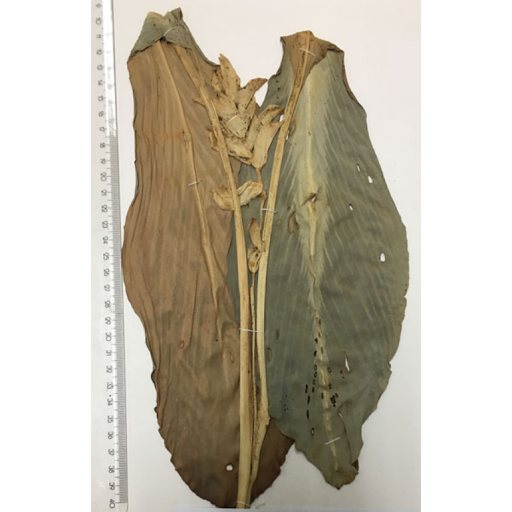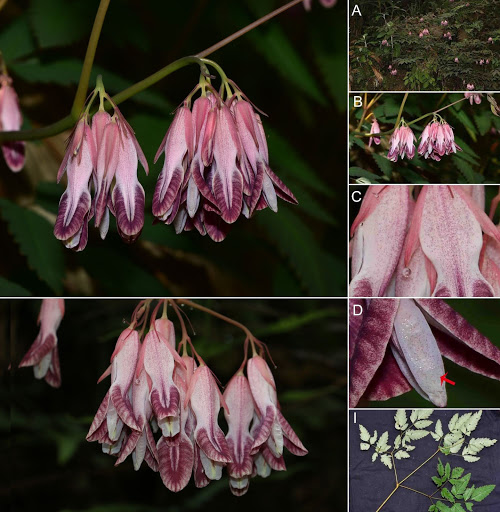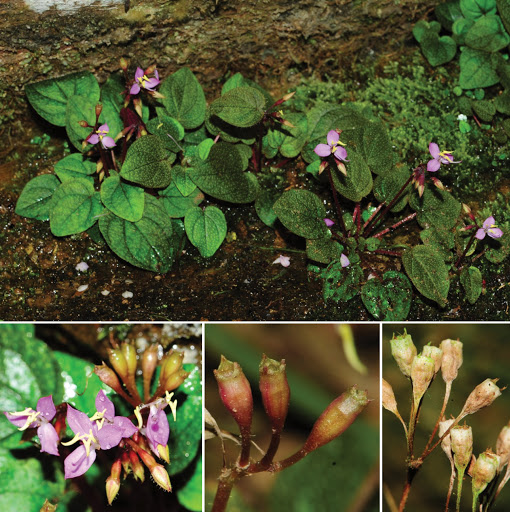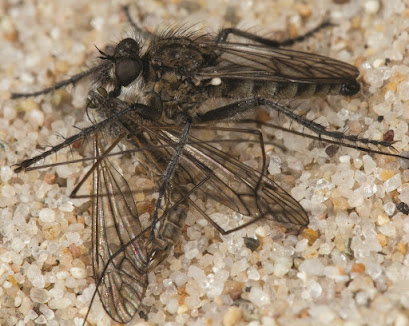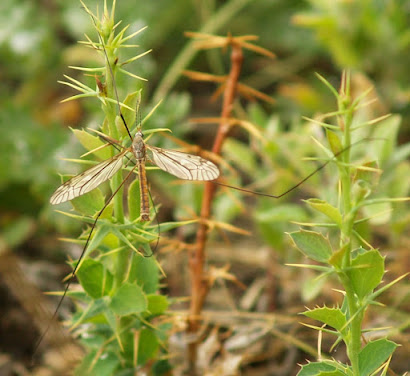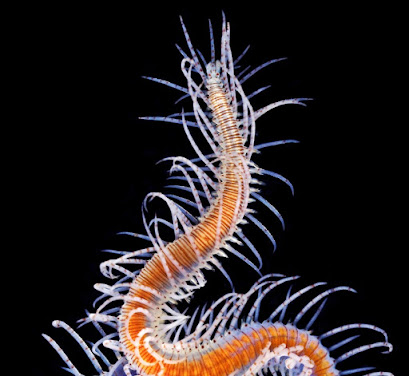[Most Recent Entries] [Calendar View]
Monday, August 24th, 2020
| Time | Event | ||||
| 9:52a | [Botany • 2020] Scaphochlamys longipedunculata (Zingiberaceae) บุปผานรา • A New Species from southern Thailand
Abstract A new species, Scaphochlamys longipedunculata (Zingiberaceae), is described and illustrated here. It is similar to Scaphochlamys grandis but differs in having 1- or 2-leaved shoots (versus shoots with 5 or more leaves) and peduncle length c.17 cm (versus peduncle length c.7 cm). Keywords: Scaphochlamys perakensis, Southeast Asia, Zingiberaceae  Scaphochlamys longipedunculata Maknoi, Ruchis. & Jenjitt., sp. nov. Etymology. The specific epithet, longipedunculata, refers to the peduncle, which is long in comparison with that of other Thai species. A long peduncle can also be observed in Scaphochlamys minutiflora, but that species is distinctly different from others in its crisped bracts. Saroj Ruchisansakun, Thaya Jenjittikul and Charun Maknoi. 2020. Scaphochlamys longipedunculata, A New Species from southern Thailand. Edinburgh Journal of Botany. First View. DOI: 10.1017/S0960428620000177 ดร. สาโรจน์ รุจิสรรค์สกุล ร่วมกับ ผศ.ดร. ทยา เจนจิตติกุล ภาควิชาพฤกษศาสตร์ คณะวิทยาศาสตร์ มหาวิทยาลัยมหิดล และ ดร. จรัญ มากน้อย นักพฤกษศาสตร์ประจำสวนพฤกษศาสตร์บ้านร่มเก "บุปผานรา" Scaphochlamys longipedunculata Maknoi, Ruchis. & Jenjitt. โดยชื่อ บุปผานรา ตั้งตามสถานที่ค้นพบคือจังหวัด นราธิวาส เพื่อสร้างความตระหนักแก่ความสำคัญของผืนป การค้นพบครั้งนี้แสดงให้เห็นถึงความอุดมสม พืชชนิดนี้พบว่าเป็นพืชชนิดใหม่จากการศึกษ | ||||
| 10:25a | [Botany • 2020] Ichtyoselmis macrantha subsp. porphyrantha (Papaveraceae) • A New Subspecies from West Yunnan and North Myanmar
Abstract Ichtyoselmis macrantha subsp. porphyrantha J. Y. Shen & Q. B. Gong a new subspecies from West Yunnan and North Myanmar is described. The new subspecies differs from Ichtyoselmis macrantha subsp. macrantha by its outer petals purplish red and with minute red-purple spots as well as transversal lines on the apical swollen margin, and inner petals white with red-purple spots. It is distributed well to the Southwest of the distribution area of I. macrantha subsp. macrantha. Keyword: China, Ichtyoselmis macrantha subsp. porphyrantha, new subspecies, Papaveraceae, Yunnan Ichtyoselmis macrantha (Oliver) Lidén subsp. porphyrantha J.Y. Shen & Q.B. Gong, subsp. nov. Diagnosis: Ichtyoselmis macrantha subsp. porphyranthais morphologically similar to I. macrantha subsp. macranthabut differs in purplish red outer petals with minute red-purple spots and transversal lines on the apical swollen margin. Inner petals I. macrantha subsp. porphyrantha are white with minute red-purple spots. (Table 1) Etymology: This subspecies has red-purple petals, and thus the specific epithet “porphyrantha” was chosen. Chinese name is “紫花黃藥” (zǐ huā huáng yào), “紫花” which means red-purple petals, “黃藥” which refers to the genus Ichtyoselmis. Qiang-Bang Gong, Xing-Da Ma, Wen-Guang Wang, Ji-Pu Shi, Hai-Jun Yin, Chun-Cheng Duan and Jian-Yong Shen. 2020. Ichtyoselmis macrantha subsp. porphyrantha (Papaveraceae), A New Subspecies from West Yunnan and North Myanmar. Taiwania. 65(4); 423‒425. DOI: 10.6165/tai.2020.65.423 | ||||
| 2:41p | [Botany • 2020] Sonerila cardamomensis (Melastomataceae) • A New Species from Cambodia
Abstract Sonerila cardamomensis, a new species of family Melastomataceae from the Central Cardamom Protected Area in Koh Kong province of southwestern Cambodia, is described and illustrated. The species is similar to S. violifolia Hook.f. ex Triana, but is readily distinguished by its cordate leaf base, lack of setae at the nodes, longer pedicels, smaller petals, smaller hypanthiums and smaller capsules. Keywords: Cambodia, Central Cardamom Protected Area, new species, Sonerila
Sonerila cardamomensis S.H.Cho, sp. nov. Diagnosis: Sonerila cardamomensis is most similar to S. violifolia Hook.f. ex Triana, which is distributed in Myanmar and Thailand but is readily distinguished from the latter by the cordate leaf base, lack of setae at the nodes, longer pedicels, smaller petals, smaller hypanthia and smaller capsules (Table 1). Distribution and habitat: Sonerila cardamomensis grows on sandstone rocky area in evergreen forest from 420 to 600 m.a.s.l. Endemic to southwestern Cambodia, S. cardamomensis is at present known only in the Central Cardamom Protected Area in Koh Kong province. Jae-Seo Shin, Bo-Kyeong Song, Chhang Phourin, Hyosig Won, Kyong-Eun Lee and Seong-Hyun Cho. 2020. Sonerila cardamomensis (Melastomataceae), A New Species from Cambodia. PhytoKeys. 156: 139-144. DOI: 10.3897/phytokeys.156.55866 | ||||
| 3:06p | [Entomology • 2020] Molecular Phylogeny of the Genus Lasiopogon (Diptera: Asilidae) and A Taxonomic Revision of the bivittatus Section
Abstract Nearctic species of Lasiopogon Loew comprising the bivittatus section (the bivittatus group sensu Cannings 2002) are revised, with the description of 13 new species, elevation of one subspecies to species, and redescriptions of 13 previously described taxa. An updated key to western Nearctic Lasiopogon adults is provided, as are notes on taxonomy, distribution, phylogeny, and ecology. A Bayesian species tree for 67 species of Lasiopogon is estimated from one mitochondrial (COI) and three nuclear protein-coding loci (AATS, PEPCK, Wg), and compared to a previously published morphology-based phylogeny. The following new species of Lasiopogon are described (assigned to the bivittatus section except as noted): Lasiopogon anaphlecter sp. nov., L. apoecus sp. nov., L. asilomar sp. nov., L. bitumineus sp. nov., L. canningsi sp. nov., L. condylophorus sp. nov., L. esau sp. nov., L. karli sp. nov. (assigned to cinereus group of opaculus section), L. nelsoni sp. nov., L. odontotus sp. nov., L. sierra sp. nov., L. tumulicola sp. nov., L. wilcoxi sp. nov.; L. puyallupi Cole & Wilcox 1938 stat. nov. is elevated from subspecies; and the following previously described species are considered valid: L. actius Melander 1923, L. albidus Cole & Wilcox 1938, L. arenicola (Osten Sacken 1877), L. bivittatus Loew 1866, L. californicus Cole & Wilcox 1938, L. dimicki Cole & Wilcox 1938, L. drabicolum Cole 1916, L. gabrieli Cole & Wilcox 1938, L. littoris Cole 1924, L. ripicola Melander 1923, L. willametti Cole & Wilcox 1938, L. zonatus Cole & Wilcox 1938. The species L. martinensis Cole & Wilcox 1938 is considered valid but transferred to the tetragrammus group of the opaculus section. Keywords: Diptera, robber fly, assassin fly, Stichopogoninae, species tree Tristan A. McKnight and Robert A. Cannings. 2020. Molecular Phylogeny of the Genus Lasiopogon (Diptera: Asilidae) and A Taxonomic Revision of the bivittatus Section. Zootaxa. 4835(1); 1-115. DOI: 10.11646/zootaxa.4835.1.1 | ||||
| 3:24p | [Entomology • 2020] Taxonomic Review of Tipula (Vestiplex Bezzi) Crane Flies (Diptera: Tipulidae) in Mongolia
Abstract Fourteen species of Tipula (Vestiplex Bezzi, 1924) crane flies (Diptera, Tipulidae) known from Mongolia are taxonomically revised. Identification keys for males and females, redescriptions and illustrations of all species are presented. Most genital structures are illustrated for the first time. Tipula (V.) jakut Alexander, 1934 is designated as junior synonym of T. (V.) sintenisi Lackschewitz, 1933; T. (V.) kamchatkana Alexander, 1934 is designated as junior synonym of T. (V.) mediovittata Mik, 1889. Tipula (V.) balioptera Loew, 1863 and T. (V.) leucoprocta Mik, 1889 are listed as new records for the Mongolian fauna. Keywords: Diptera, distribution, hypopygium, new synonymy, ovipositor, species, taxonomy, Tipulinae Pavel Starkevich, Sigitas Podenas and Jon K. Gelhaus. 2020. Taxonomic Review of Tipula (Vestiplex Bezzi) Crane Flies (Diptera: Tipulidae) in Mongolia. Zootaxa. 4837(1); 1-88. DOI: 10.11646/zootaxa.4837.1.1 | ||||
| 3:51p | [Invertebrate • 2020] Syllidae (Annelida) from East Timor and the Philippines (Pacific Ocean), with the Description of Three New Species of Syllis Savigny in Lamarck, 1818
Abstract East Timor is an island located to the south of the Indonesian Archipelago and to the north of Australia, between the Indian and Pacific Oceans. It is included in the Coral Triangle and houses an amazing quantity of marine biodiversity. However, only two species of Syllidae (Annelida) have been reported up to now: Trypanosyllis migueli and T. devae. Based on a small collection from the Australian Museum, we have identified nine genera and 17 species: Brevicirrosyllis mariae, Opisthodonta morena, Sphaerosyllis densopapillata, Branchiosyllis australis, B. exilis, B. maculata, B. verruculosa, Haplosyllis djiboutiensis, Opisthosyllis brunnea, Syllis alternata, S. broomensis, S. corallicola, S. erikae, S. gerlachi, S. hyalina, S. setoensis and Trypanosyllis luzonensis. This is the first record of S. gerlachi outside the Indian Ocean, and B. mariae, O. morena, S. densopapillata, H. djiboutiensis, S. corallicola and S. erikae have not been previously reported in tropical Asia. A specimen of Parahaplosyllis sp. could not be identified due to its poor condition. Three species belonging to Syllis are herein described as new: Syllis cambuk n. sp. has a large size body, with anterior segments much wider and shorter than posterior ones, long whip-shaped dorsal cirri and bidentate midbody and posterior chaetae, with both teeth equal in size and shape; Syllis hampirmenyatu n. sp. has three chaetae per posterior parapodium, with short and wide blades appearing to be fused with shafts, but still clearly distinguishable from each other, bidentate, with proximal tooth clearly smaller and thinner than distal one; and Syllis maganda n. sp. is easily recognizable because of its spectacular orange and blue colouration, only observable in living specimens, with broad transverse red stripes on the dorsum forming a distinctive pattern and red spots on the cirri and prostomium observable in both living and fixed specimens. Additionally, Philippine samples from the Museo Nacional de Ciencias Naturales of Madrid have been examined corresponding to S. maganda n. sp. A Philippine specimen of S. maganda n. sp. had a small unidentified specimen of Haplosyllis attached to a posterior dorsal cirrus, which is the first documented case of such an interaction between two species of Syllidae. This provisionally called Haplosyllis sp. is characterized by its simple chaetae with short spur and two very long, distinct curved teeth, very close to each other. A regenerated prostomium and a stolon were also found in other Philippine specimens of S. maganda n. sp. Keywords: Annelida, Coral Triangle, Timor-Leste, taxonomy, Polychaeta, ectosymbiosis, anterior regeneration Syllis maganda Martínez & San Martín, 2020 María José Martínez and Guillermo San Martín. 2020. Syllidae (Annelida) from East Timor and the Philippines (Pacific Ocean), with the Description of Three New Species of Syllis Savigny in Lamarck, 1818. Zootaxa. 4834(2); 231–263. DOI: 10.11646/zootaxa.4834.2.5 |
| << Previous Day |
2020/08/24 [Calendar] |
Next Day >> |
